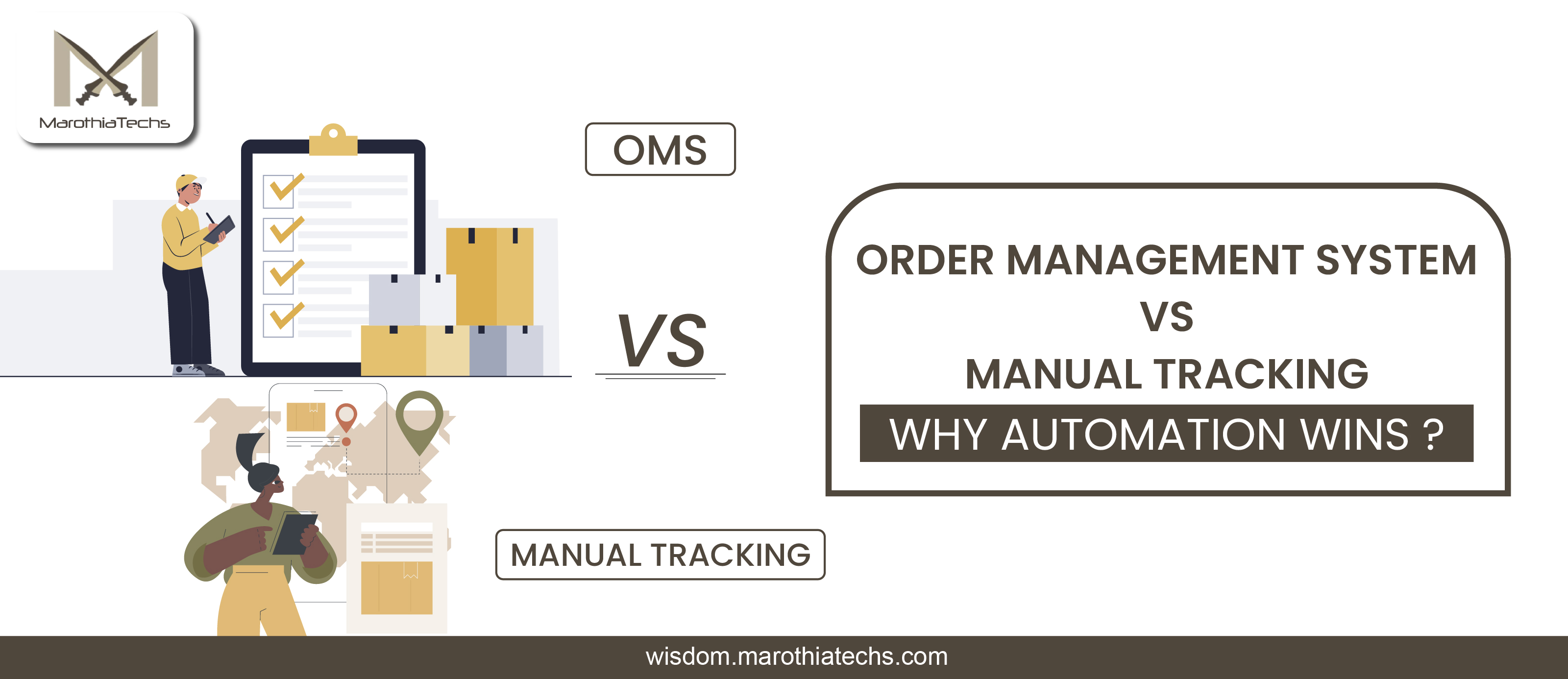Efficient order management is crucial for the success of any e-commerce business. Whether you are managing a small online shop or a large-scale enterprise, ensuring that orders are processed seamlessly is essential to keep customers happy and operations running smoothly.
However, many businesses still rely on manual tracking, which often leads to errors, delays, and inefficiencies. Managing orders manually not only takes a lot of time but also limits your ability to scale operations effectively.
This is where technology steps in to transform the way orders are managed. In this blog, we will compare manual tracking with an Order Management System (OMS) and explore how automation can help streamline your e-commerce processes.
The Challenges of Manual Tracking
Manual tracking has been a traditional method for managing orders, but it is far from ideal in today’s e-commerce environment. The complexities of modern supply chains demand accuracy and speed that manual methods struggle to provide. As businesses expand, these outdated practices can become significant roadblocks to growth and efficiency.
- Prone to Human Errors: One of the biggest drawbacks of manual tracking is the potential for errors. Misplacing records, entering incorrect details, or forgetting to update inventory can disrupt operations and impact customer satisfaction.
- Time-Consuming Processes: Manually updating spreadsheets, coordinating with teams, and keeping track of orders across platforms takes up valuable time—time that could be better spent growing your business.
- Limited Scalability: As your order volume increases, manual methods struggle to keep up. This creates bottlenecks in your processes and makes it harder to deliver on customer expectations.
Why Automation is Essential for eCommerce
Technology offers a more streamlined and effective solution for order management. With an Order Management System, you can save time, reduce errors, and manage orders more efficiently.
Automation also helps improve overall accuracy by minimizing human intervention in repetitive tasks. Additionally, it ensures your business remains competitive by adapting quickly to changing market demands.
- Real-Time Updates: An OMS integrates seamlessly with your eCommerce platform and provides real-time updates on orders, inventory, and shipping. This ensures accurate information is always at your fingertips.
- Centralised Management: By consolidating all your order-related data in one platform, an OMS eliminates the confusion of juggling multiple systems or spreadsheets. This makes tracking orders and monitoring inventory easier and faster.
- Improved Productivity: Automation frees up your team from repetitive tasks, allowing them to focus on activities that drive growth, such as marketing and customer engagement.
The Key Advantages of an Order Management System
Switching to an automated system provides several benefits that manual tracking simply cannot match. It empowers businesses to handle increased order volumes effortlessly while maintaining accuracy. Additionally, it offers greater visibility into operations, enabling proactive decision-making and better resource management.
- Better Customer Experience: With faster and more accurate order processing, you can ensure timely deliveries and reduce customer complaints. Happy customers are more likely to return and recommend your brand to others.
- Data-Driven Decisions: An OMS provides valuable insights, such as sales trends and inventory levels. These insights help you make informed decisions about stock management and marketing strategies.
- Cost Savings: Automation reduces the chances of errors that can result in refunds, returns, or lost customers. By minimising these issues, an OMS helps protect your bottom line.
Why Manual Tracking Can Hold Your Business Back
While manual tracking might seem like a cost-effective option initially, its hidden drawbacks can outweigh the benefits in the long run. Inefficiencies in manual processes can lead to lost opportunities and decreased customer satisfaction. As businesses grow, the limitations of manual tracking become increasingly apparent, hindering scalability and profitability.
- Errors Can Lead to Losses: Mistakes in order management can disrupt your workflow, damage your reputation, and even lead to financial losses.
- Lack of Visibility: Manual methods often fail to provide a clear view of inventory levels or sales data in real-time, making it difficult to plan effectively.
- Inefficiency During Peak Periods: During busy times like holiday sales, manual tracking can’t keep up with the increased demand. This can result in delayed orders, dissatisfied customers, and missed opportunities.
How an Order Management System Simplifies Operations
An Order Management System streamlines every step of the order process, from receiving orders to shipping them out. It reduces manual intervention, ensuring fewer errors and faster turnaround times. Additionally, it enables better coordination between teams, enhancing overall efficiency and customer satisfaction.
- Automated Order Processing: Orders are processed automatically, reducing the chance of errors and speeding up the workflow.
- Inventory Management: Stock levels are updated in real-time, ensuring you never oversell or run out of inventory unexpectedly.
- Shipping Integration: Easily connect with shipping providers to generate labels and track deliveries.
These features not only make daily operations more efficient but also ensure that your business is prepared to handle growth.
Making the Shift to Automation
If your current processes feel overwhelming or inefficient, it might be time to consider automation. An automated system not only simplifies order management but also allows your business to scale effortlessly. By reducing errors and enhancing productivity, automation becomes a strategic investment for long-term growth.
Signs You Need an OMS:
- You spend hours managing orders manually.
- Errors in order processing are becoming frequent.
- Your business struggles to meet customer expectations during busy periods.
Investing in an OMS can address these challenges, helping your business operate more smoothly and scale successfully.
For eCommerce businesses, the choice between manual tracking and automation is a critical one. While manual methods may seem manageable at first, they often lead to inefficiencies, errors, and lost opportunities as your business grows.
By implementing an Order Management System, you can optimise operations, enhance customer satisfaction, and position your business for success in a competitive market.
Don’t let outdated methods hold your business back. Embrace the benefits of automation and transform the way you manage your orders.Looking to streamline your operations? Discover how an Order Management System can improve your business today. So what are you waiting for Download our app Wisdom OMS from play store and App store Now!


Leave a Reply